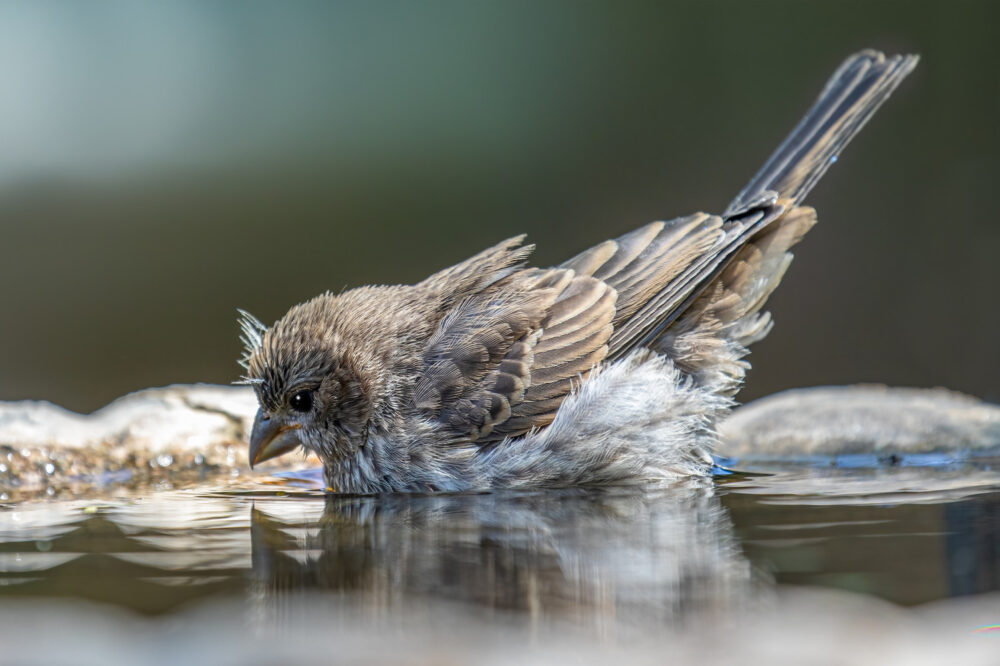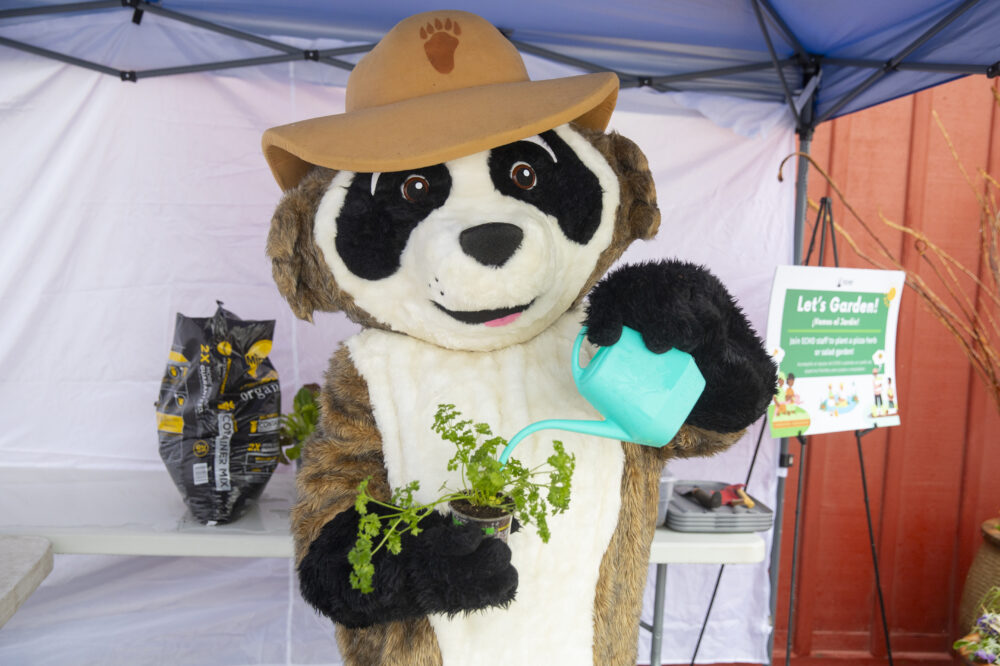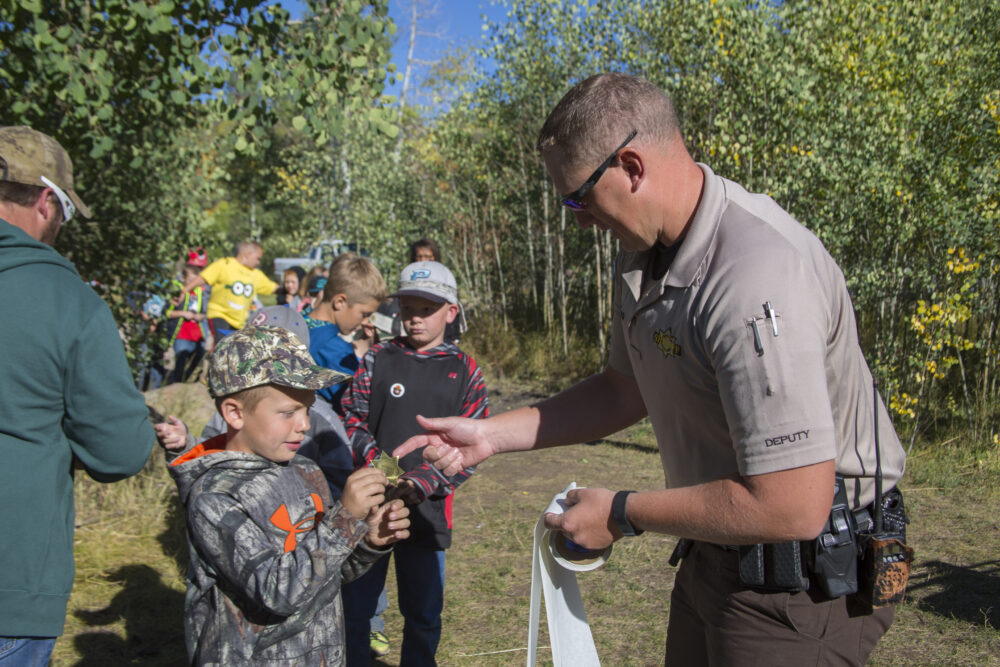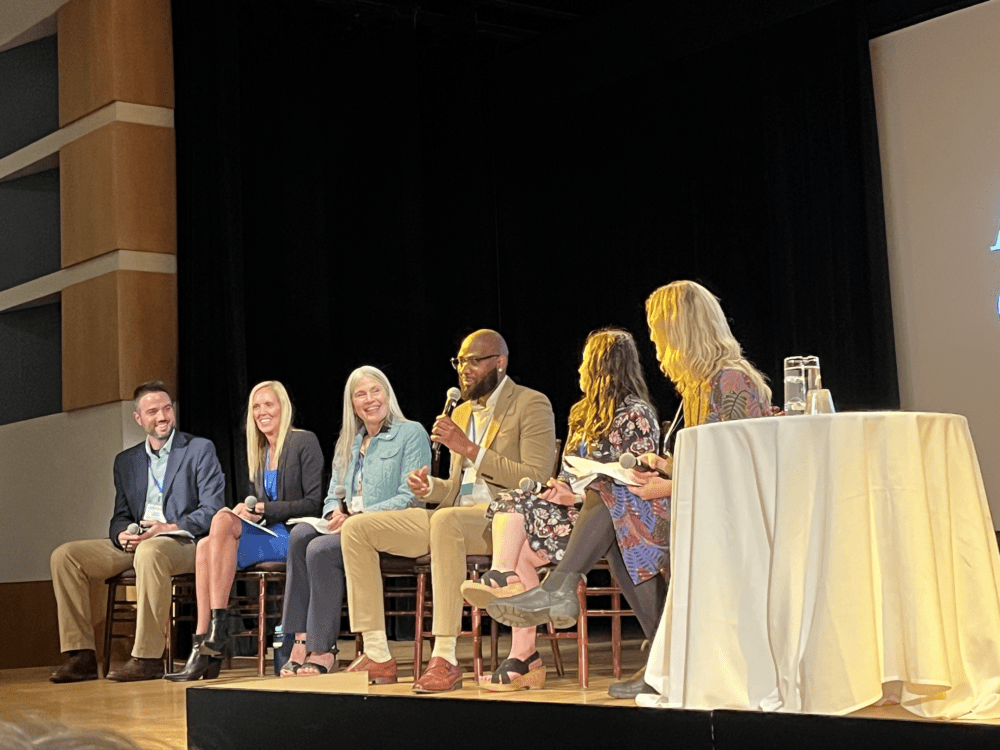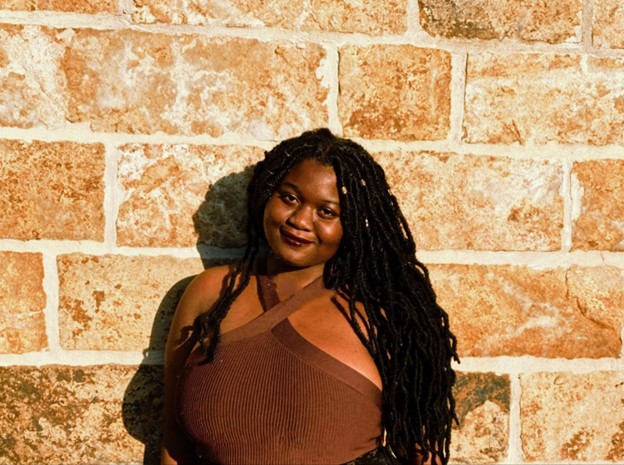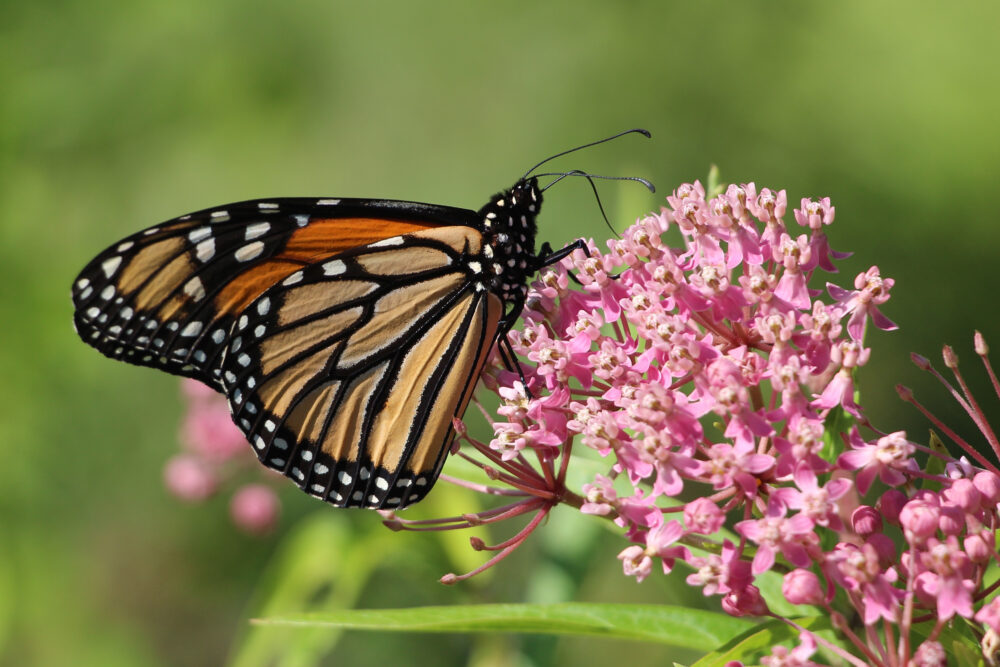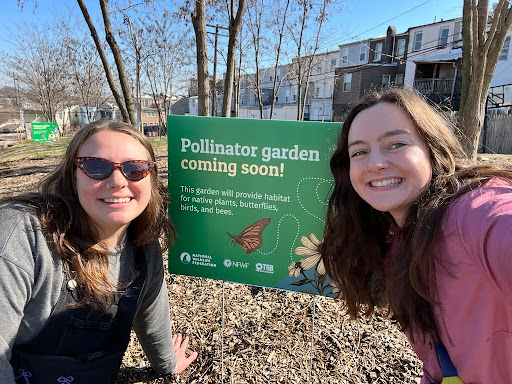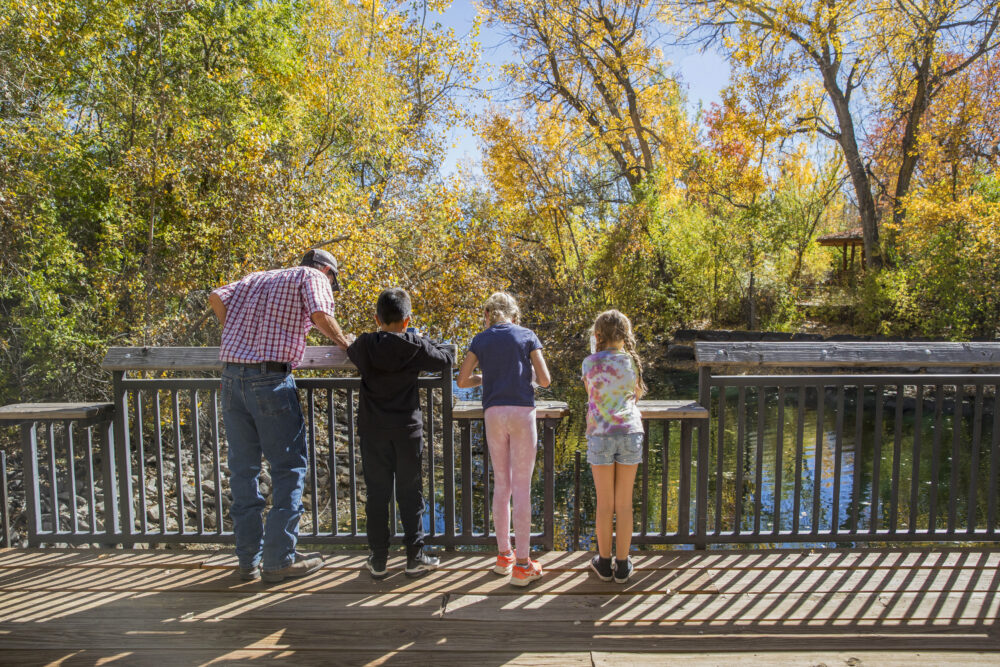We have much more to do and your continued support is needed now more than ever.
7 Tips to Safely Introduce Your Baby to the Outdoors
Guest post by Anne Keisman
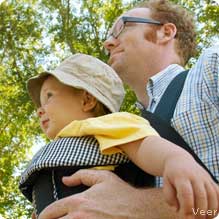 Birds singing in the backyard, light filtering through trees, the smell of honeysuckle on a warm summer night: the nature in your neighborhood will delight a baby’s developing senses. And if you start taking her outside early, she will grow a life-long love of the outdoors.
Birds singing in the backyard, light filtering through trees, the smell of honeysuckle on a warm summer night: the nature in your neighborhood will delight a baby’s developing senses. And if you start taking her outside early, she will grow a life-long love of the outdoors.
But what about mosquito bites, bee stings … sunburn? Understandably, parents have safety concerns when introducing their baby to the natural world—but with these tips, the outdoors can be a part of your child’s life from day one.
1. When is it safe to take a baby outside?
You and your baby can head outside right away. Many pediatricians recommend keeping newborns away from crowded places, where germs are prevalent. But as long as you take the proper precautions, a walk outside is great for everybody—especially for tired parents!
2. When is it too hot, too cold, or too wet to take a baby outside?
Great questions! Find out the best ways to prepare for summer heat, wet or cold weather, wind, and snow with your baby.
How to prepare for:
- Summer heat: Go out in the morning or early evening to avoid the highest daily temperatures. Have baby wear a hat and lightly-colored cotton clothes. Avoid direct sun and seek shade. Bring a spray bottle of water for a quick cool-down. Of course, splashing in a pool, lake, or stream with your baby is refreshing too!
- Wet or cold weather: Dress your baby in several thin layers, a warm hat, mittens, and insulating shoes or socks. To make sure baby’s not getting overheated, stick your hand on her skin under her clothes and shed a layer if needed. The rule of thumb for older babies and young children is to dress them in one more layer of clothing than an adult would wear in the same conditions.
- Wind: If your baby seems uncomfortable, and you can’t shield her from the wind, take her inside.
- Snow: Snowflakes are magical, especially to a baby. Get a baby snow suit so she doesn’t miss out on the fun. Hint: Look for them at second-hand shops – chances are they’ve only been used a few times.
3. How do I protect my baby from the sun?
The sun is our friend: it makes plants grow, keeps us warm, and helps us see the world around us. But it is true that a baby’s skin is especially sensitive to the sun’s rays. Here are some tips to help protect your baby from the sun:
- Avoid the sun during the hottest part of the day between 10am-2pm. Stay in the shade, and remember that reflected light can also be harmful. Water, sand, and snow are three big reflectors, so just be aware of your surroundings!
- Dress infants in lightweight long pants, long-sleeved shirts, and brimmed hats that shade the neck to prevent sunburn.
- Even on cloudy days or while riding in the car, always use a sunscreen specially developed for babies. If your baby is younger than 6 months of age, discuss the use of sunscreens with your pediatrician.
- Get more summer safety tips and learn more about sun safety.
4. How do I know which plants are dangerous?
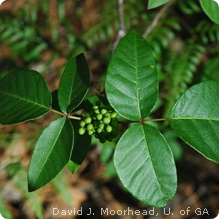 What is that plant in the photo? It’s poison ivy!
What is that plant in the photo? It’s poison ivy!
Making grass whistles, eating blackberries, blowing a dandelion into the wind: most plants and flowers are delightful parts of an outdoor childhood. For the few troublemakers, here are some tips:
- Learn what poison oak, poison sumac, and poison ivy look like. These are the three most common plants whose sap, when in contact with human skin, causes an allergic skin reaction. Poison ivy and poison oak both have shiny green leaves that grow three to a stem. When the child is older, you can teach them the rhyme: “Leaves of three, let them be.” Learn more about poison ivy and poison oak.
- Be sure to consult your pediatrician if you feel your baby is exhibiting an allergic rash.
- Babies explore their world by putting just about anything into their mouth. But some plants are actually poisonous to eat. Visit The National Capital Poison Center‘s site for a list of which ones to avoid.
5. How do I keep the bugs away?
Not all insects are as lovely as ladybugs and butterflies. But don’t let them keep you and your baby inside.
- Mosquitoes: First, learn how to keep mosquitoes from making a home in your backyard. Then, just so you are aware, check with your local public health department to find out if there are any known mosquito-borne diseases in your area (e.g. West Nile Virus).
- Ticks: Ticks live in warm and humid environments, especially in woody or grassy areas, so it’s best to avoid these environments with a baby. As a precaution, dress baby in light-colored clothing, so ticks can be spotted easily. Check your baby’s skin and hair for ticks when you come inside. Remember that the deer tick can carry Lyme disease, is only about the size of a sesame seed. Make sure you remove any ticks properly and consult your pediatrician.
- Stinging insects: Bees, wasps, and other stinging insects don’t attack unless provoked, but babies might annoy one by accident. If your baby does get stung, it will most likely cause some swelling and pain that will be relieved in a few hours. It is important to remove the stinger – use a credit card or fingernail and gently scrape it off horizontally. Then soak a cloth in cold water and press it over the area to reduce the pain and swelling. Learn more about treating insect bites and stings.
- Allergic reaction: In rare instances, your baby may be allergic to bee stings, which is very dangerous. Symptoms of this allergy include: Rash over many parts of her body, shortness of breath, swollen tongue, hands, or face, weakness, and unconsciousness. Call 911 immediately. Learn more responding to allergic reactions to bee stings.
- Bug repellent: Bug repellents labeled “for the whole family” can usually be used once a child is over two months old. Talk with your pediatrician before using bug repellent on your baby.
6. But nature’s so … dirty!
Don’t be afraid if your baby gets dirty while outside. A growing number of researchers believe that good old-fashioned playing in the dirt exposes children to a myriad of bacteria, viruses and microbes thatstrengthen their immune systems. Mud pies, anyone?
7. Can babies get seasonal allergies, like hay fever?
Hooray! This is one thing you most likely don’t have to worry about—yet. It’s rare that babies experience seasonal allergies for the simple reason they haven’t been alive long enough. But when a child is about three years old, seasonal allergies can spring up, and your pediatrician can offer guidance on how to treat them.

